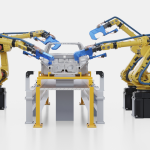In a move aimed at easing mounting pressure on the U.S. auto industry, President Donald Trump signed an executive order on April 29 to ease the impact of tariffs on auto parts. Domestic automakers will receive temporary reimbursements of up to 3.75% of the value of vehicles assembled in the U.S., a figure set to taper down to 2.5% next year and disappear altogether in year three.
Auto Tariff Shift Offers Temporary Reprieve, Not Long-Term Relief
President Trump’s new executive order offers limited relief from auto part tariffs, granting short-term credits to U.S. carmakers as the administration aims to push manufacturing back home. The move comes after intense lobbying from car manufacturers and suppliers who warned that escalating tariffs could lead to higher car prices, production slowdowns, and job losses. The administration’s compromise aims to offer a runway for carmakers to adjust sourcing strategies and ramp up domestic parts production.
Also included in the order is that manufacturers will no longer be subject to stacking tariffs. Instead, they’ll face only the highest applicable tariff per import, be it the 25% auto parts duty or other steel and aluminum levies. Vehicles built with at least 85% of components complying with the U.S.-Mexico-Canada Agreement (USMCA) will continue to enjoy full tariff exemptions.
Notably, parts imported from China remain outside the scope of the relief and will still face tariffs of at least 145%.
Still, Trump was clear about the temporary nature of the credits, telling a Michigan crowd, “We gave them a little time before we slaughter them if they don’t do this.” The political rhetoric may play well on the campaign trail, but for logistics and procurement leaders, it underscores the urgent need to accelerate domestic sourcing plans or secure near-shore alternatives before the window closes.
Industry Applauds Flexibility But Warns of Looming Cost Pressures
Auto industry giants General Motors, Ford, and Stellantis all welcomed the move. GM CEO Mary Barra called it “a level playing field” for U.S. companies, while Ford said it would help mitigate near-term tariff impact across the supply chain. But even with the relief, GM has already pulled its profit forecast for 2025, citing ongoing uncertainty. Other automakers are likely to follow suit as they reevaluate costs tied to future production commitments and reshoring timelines.
The broader supplier ecosystem remains wary. A joint letter from several major auto associations warned that “most auto suppliers are not capitalized for an abrupt tariff-induced disruption” and flagged the risk of bankruptcies and production stoppages. “It only takes the failure of one supplier to shut down an entire production line,” the letter stated, referencing painful lessons from the COVID-19 era.
Some suppliers are already pivoting. Nissan, for example, recently reversed a planned production cut at its Tennessee plant, opting instead to maintain both assembly lines to hedge against rising import costs. For others, however, the capital requirements and logistical hurdles to rapidly shift operations remain formidable.
Policy as a Prompt for Structural Reassessment
This latest adjustment to U.S. auto tariffs reflects a tactical compromise rather than a strategic redirection. While it introduces short-term relief mechanisms, it also embeds a clear expectation: domestic manufacturing must take precedence, and supply networks should adapt accordingly. For supply chain leaders, it reinforces the reality that global value chains are now operating under a more interventionist trade framework, where policy agility will be required alongside operational efficiency.







